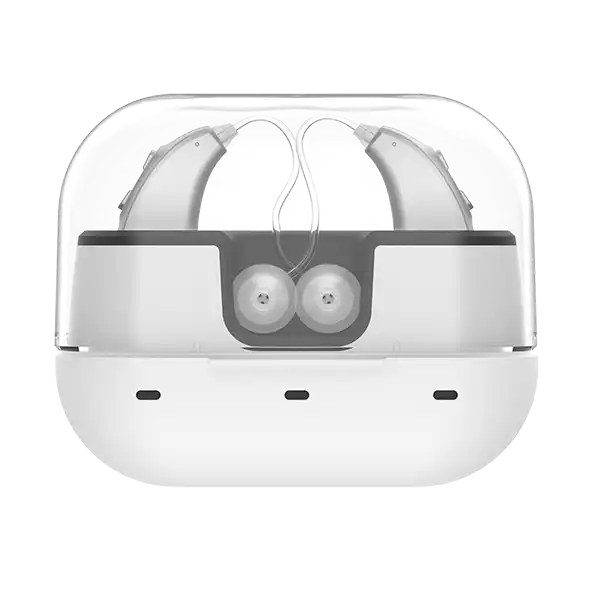Do you know about asymmetric hearing loss?
This type of hearing loss can be unilateral or bilateral with varying degrees of hearing loss.
Asymmetric hearing loss is clinically defined as a difference in the average hearing threshold of 15 dB HL or a difference in speech recognition rate of more than 20% in both ears.
However, asymmetric hearing loss is often not noticeable and is often overlooked because the sound can still be heard using the healthy ear.
Hearing in only one ear is the most common manifestation of asymmetric hearing loss. What are the dangers of doing this over time?
What are the consequences of listening in only one ear?
Long-term reliance on one ear for listening can cause hearing loss in the poorer ear to worsen, resulting in auditory deprivation and affecting the auditory pathway's development.
Listening with one ear does not allow you to localize the sound source. For example, suppose you are on the road and cannot accurately determine the car's direction coming from behind. In that case, you should duck to the right but mistakenly dodge to the left, causing the tragedy.
Significant hearing impairment is demonstrated in noisy environments. The target speech cannot be heard when multiple people are talking. Even in quiet environments, there is the possibility of missing important sound information.
Research has shown that asymmetric hearing loss affects the development of the auditory pathways in the brain. Suppose asymmetric hearing loss occurs in childhood and is not adequately intervened in the long term. In that case, a range of severe impairments can manifest.
These disorders include significant language development delays, intellectual disabilities, and communication impairments, in addition to hearing loss.
What are the advantages of binaural hearing?

1. Prevention of hearing deprivation degeneration in the contralateral ear
For children, the critical period for the formation of binaural stimuli is between the ages of 4 and 8, so it is essential to intervene in both ears early in children with hearing loss.
In adults, it has been found that after 4-5 years of using artificial hearing devices in both ears, the speech recognition rate in both ears will remain stable, while using only one ear, the speech recognition rate in the non-intervention side will decrease after 4-5 years.
2. Eliminating the adverse effects of cephalometric shadowing
In monaural listening, the head has a blocking and attenuating effect on sound transmission, especially for high-frequency sounds greater than 1500 Hz; the attenuation can reach 10-16 decibels, seriously affecting speech recognition.
Binaural listening can fundamentally eliminate the attenuation of speech sounds caused by the head shadow effect.
3. Improve the ability to distinguish sound orientation and hear more clearly in noise
When sound waves travel to the ears from different directions, they produce different phase, time, and intensity differences. Binaural balanced listening significantly improves the ability to localize sound sources.
The squelch effect of binaural hearing can increase the signal-to-noise ratio by up to 12dB, allowing us to hear more clearly in noisy environments. Sound listening feels more natural and comfortable.
4. Make hearing more sensitive and feel louder
Due to binaural hearing's cumulative effect, the binaural hearing threshold is about 10dB better than the monaural threshold. The loudness is more robust and has better differential sensitivity.
It has been found that wearing hearing aids binaurally results in a slightly lower overall benefit per hearing aid, resulting in less whine and also increases battery life.
Cochlear implant users can also reduce the amount of cochlear stimulation, extend battery time, and improve clarity.


